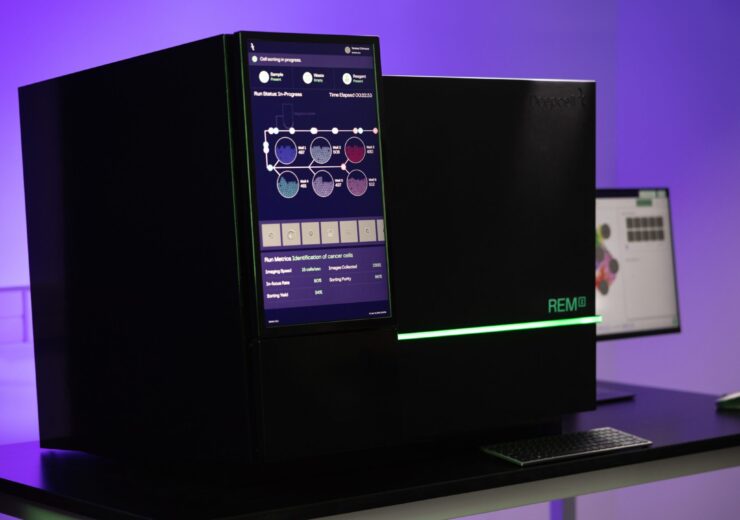Benchtop REM-I Platform enables unprecedented insights into cell biology through scalable single cell imaging, high-dimensional analysis and cell sorting

Deepcell REM-I Instrument (Credit: Business Wire)
Deepcell, a pioneer in artificial intelligence (AI)-powered single cell analysis to fuel deep biological discoveries, today announced the launch of the REM-I Platform, a high-dimensional cell morphology analysis and sorting platform which comprises the REM-I benchtop instrument, Human Foundation Model, and Axon data suite. By bringing together single cell imaging, sorting, and high-dimensional analysis, the REM-I Platform will catalyze new methods of discovery in a wide range of fields including cancer biology, developmental biology, stem cell biology, gene therapy and functional screening, among others.
Cell morphology was one of the first ways cells were studied since the advent of the microscope. Despite recent advancements in microscopy and flow cytometry, existing tools for cellular quantification and characterization have left the field of cell biology hypothesis bounded and reliant on human interpretation, until now. With the new generation of AI and machine learning models like Deepcell’s Human Foundation Model, cell morphology can finally join other high-dimensional, single cell analysis methods and enable researchers to realize the full potential of the morpholome.
“In the launch of the REM-I Platform we are witnessing the realization of years of first-principle thinking about the future of cell biology—a future liberated from the constraints of prior knowledge,” said Euan Ashley, MD, PhD, scientific cofounder of Deepcell, associate dean in the Stanford University School of Medicine and professor at Stanford University. “With the help of sophisticated artificial intelligence models, we can surpass the limits of what our eyes can see and peer ever more deeply into the biology of individual cells. I can’t wait to see what the scientific community does with this powerful new tool.”
REM-I Platform Enables Unbounded Single Cell Discovery and Analysis
Deepcell technology has been used to capture and characterize more than two billion images of single cells across a large variety of cell types. The Human Foundation Model, a self-supervised deep learning model trained on a subset of these unlabeled cellular images from a range of carefully selected biological samples, characterizes brightfield single cell images captured on the REM-I instrument and generates high-dimensional embedding data. Researchers can use the Axon data suite to access, visualize, and analyze these data in real-time and perform sorting of their cell groups of interest into up to six outlets on the REM-I instrument.
“Until now, the field of morphology has been limited to human interpretation of cellular features. Advancing morphology-powered discovery requires a new way of thinking to scale up and democratize single cell data generation and to enable unprecedented insights,” said Mahyar Salek, PhD, cofounder, president, and chief technology officer at Deepcell. “Advances in machine learning will transform our understanding of cell phenotype akin to the way next-generation sequencing transformed our understanding of the genome.”
Deepcell launched its Technology Access Program with the Translational Genomics Research Institute as well as University of California San Francisco, which leveraged the technology to study human cell lines, bodily fluids and solid tissues as part of cancer research and drug screening projects.
The company recently completed its first European installation of the Deepcell technology through its Technology Access Program at the Erasmus Medical Center in Rotterdam, which will use the instrument to study immune therapies from cancer patient samples.
Source: Company Press Release
